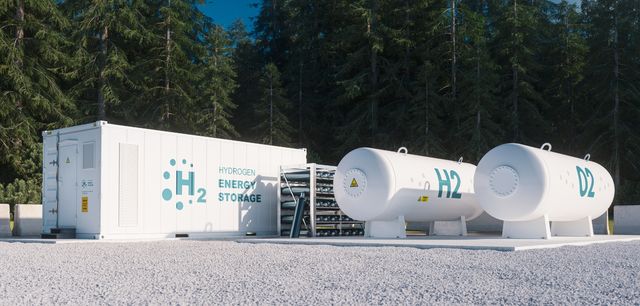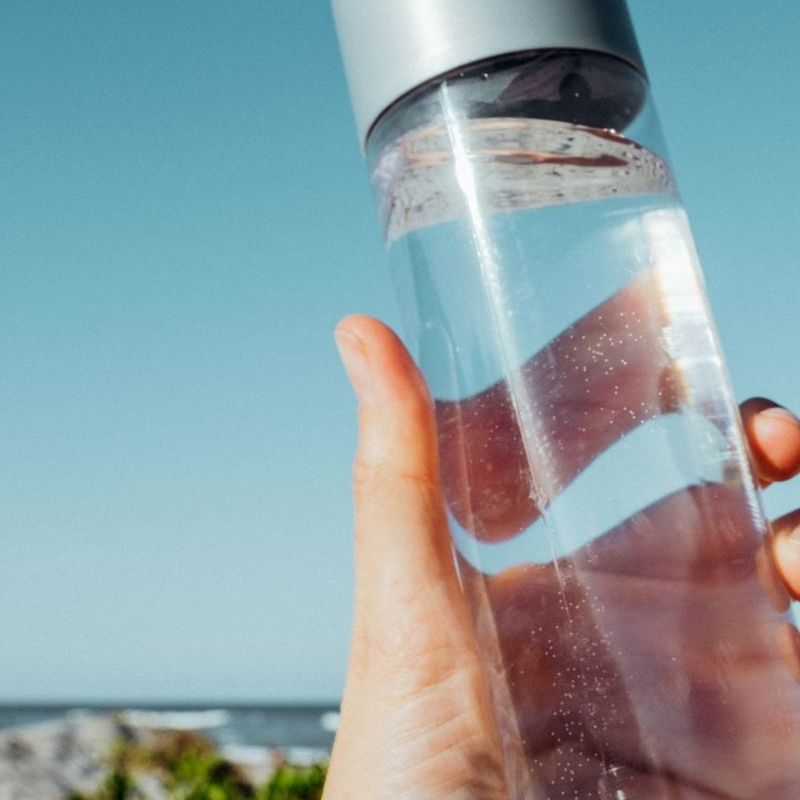01 August 2024
If the world is going to reshape transport and industrial processes to be more climate friendly, we will need massive amounts of green hydrogen. This gas, which is as volatile as it is useful, is produced in electrolysers from water and green electricity. But just how safe are electrolysers, and how are they tested? We talked about this with Jan Simoneit from DMT ENERGY ENGINEERS, a subsidiary of the TÜV NORD GROUP.
Mr. Simoneit, the first thing some people think about when it comes to hydrogen is the Hindenburg disaster of 1936. How dangerous is dealing with hydrogen in general and electrolysers in particular?
Jan Simoneit: You’re right that the Hindenburg does indeed loom large for many people, as we keep finding when we engage the public in discussion of the projects we manage. We need to provide detailed information here to dispel their concerns and doubts. As is the case with petrol at filling stations, for example, the risks associated with hydrogen are as well known as they are manageable. And unlike petrol, it isn’t toxic or harmful to the environment. Hydrogen is only flammable and explosive when combined with oxygen. Because it’s lighter than air, hydrogen rises if there’s a leak and evaporates very quickly. This means that explosions are as good as impossible out of doors. In indoor spaces like electrolysers, safety measures are of course needed to prevent such explosions. The requirements imposed by the legislator are so strict and extensive that effectively nothing can go wrong. Industry has a long track record of dealing with hydrogen: The first electrolysers were developed way back in the 19th century. A hydrogen pipeline in the Ruhr region connecting various chemical parks has been in operation safely and without any issues since 1938.
What safety measures are taken in the plants to deal with hydrogen leaks?
Hydrogen is a very lightweight gas. If it is to be stored and transported efficiently, it must first be compacted, either by liquefying it or compressing it under high pressure. The pressure vessels are tested and also designed to comfortably exceed the requirements placed on them. This means that tanks designed for a pressure of 500 bar, for example, could theoretically withstand 650 to 700 bar. If fire spreads around the container, the hydrogen gets discharged through safety valves at the top. In the electrolyser, exhaust air flues are used for this purpose, through which escaping hydrogen is continuously discharged. These are permanently open, thereby ensuring that an explosive atmosphere can never form in the building. Sensors also monitor indoor hydrogen concentrations. If the electrolysers are in a machine hall instead of a container and these sensors measure an increased concentration of hydrogen, ventilation flaps automatically open through which the hydrogen can escape.
How are these security measures tested?
We’re currently supervising the project of a Dutch investor who wants to build electrolysis plants. When a plant of this kind is planned, a safety concept is first drawn up which includes an explosion protection concept, a fire protection concept, a risk assessment, an environmental protection report and a noise protection report. These concepts are examined by the competent licensing authority. If everything is as it should be and all the limit values are adhered to, it then issues a building permit. Once the plant is completed, everything is tested and measured again, and an operating license is only issued after successful testing. When the plant is operational, there are regular checks, usually once a year. Depending on the location or the amount of hydrogen stored, however, these checks can also be carried out at more frequent intervals.
Are toxic substances produced by electrolysers during operation?
Electrolysis produces only hydrogen, oxygen and, as a further by-product, salty water. Bigger systems also need coolant. This can take the form of water-glycol mixtures, for example. These are neither toxic nor hazardous to the environment. So, many plant operators rely on these water-glycol mixtures, which we also recommend for our part in project planning. If you want to store larger quantities of hydrogen faster, chillers are used to help cool it down. In these chillers, ammonia is a very good refrigerant, for example, but it’s highly toxic. Appropriate protective measures must be taken to ensure that it can’t penetrate the ground in the event of a leak. There are alternatives, such as CO2, that aren’t as hazardous to the environment. Sulphur hexafluoride is also no longer used as an insulator, although, like ammonia, it is permitted in principle. However, since they are many times more harmful to the climate than CO2 when they escape, current electrolysis projects don’t use these substances or others like them. This ensures that the entire plant is as “green”, that is, as climate- and environmentally friendly, as possible.
The Bundesrat and the Federal Government want to simplify approval procedures for smaller electrolysers. What is the plan here?
As it happens, the requirements for the approval of electrolysers are currently excessive. This is because hydrogen has previously been produced mainly by steam reformation from coal in large industrial plants. Particularly extensive requirements apply to this, of course – for example, with regard to the distance to the surrounding buildings. So, the plan is for electrolysers with a capacity of up to 68 megawatts and a production capacity of less than 50 tonnes per day to be subjected to a simplified approval procedure. Small electrolysers of up to five megawatts are to be exempted from the licensing requirement under the Federal Immission Control Act. The idea here is to reduce bureaucratic hurdles and accelerate the spread especially of smaller electrolysers. We’re going to need many of these decentralised plants to drive the energy transition forward and let us store electricity from wind power in the form of hydrogen, for example. Existing noise protection limits won’t be affected by the simplified approval procedures. And of course, this also applies to the requirements for the safe handling of hydrogen. So, people in neighbouring residential areas will be able to sleep undisturbed in their beds as before.
About Jan Simoneit:
Jan Simoneit is a consultant at DMT ENERGY ENGINEERS. With his colleagues, he designs and plans electrolysis plants. He also provides support for their construction and in communication with the authorities. DMT ENERGY ENGINEERS is part of the HydroHub. With this initiative, the TÜV NORD GROUP is pooling all its hydrogen-related services and projects in the areas of consulting, engineering and training.




